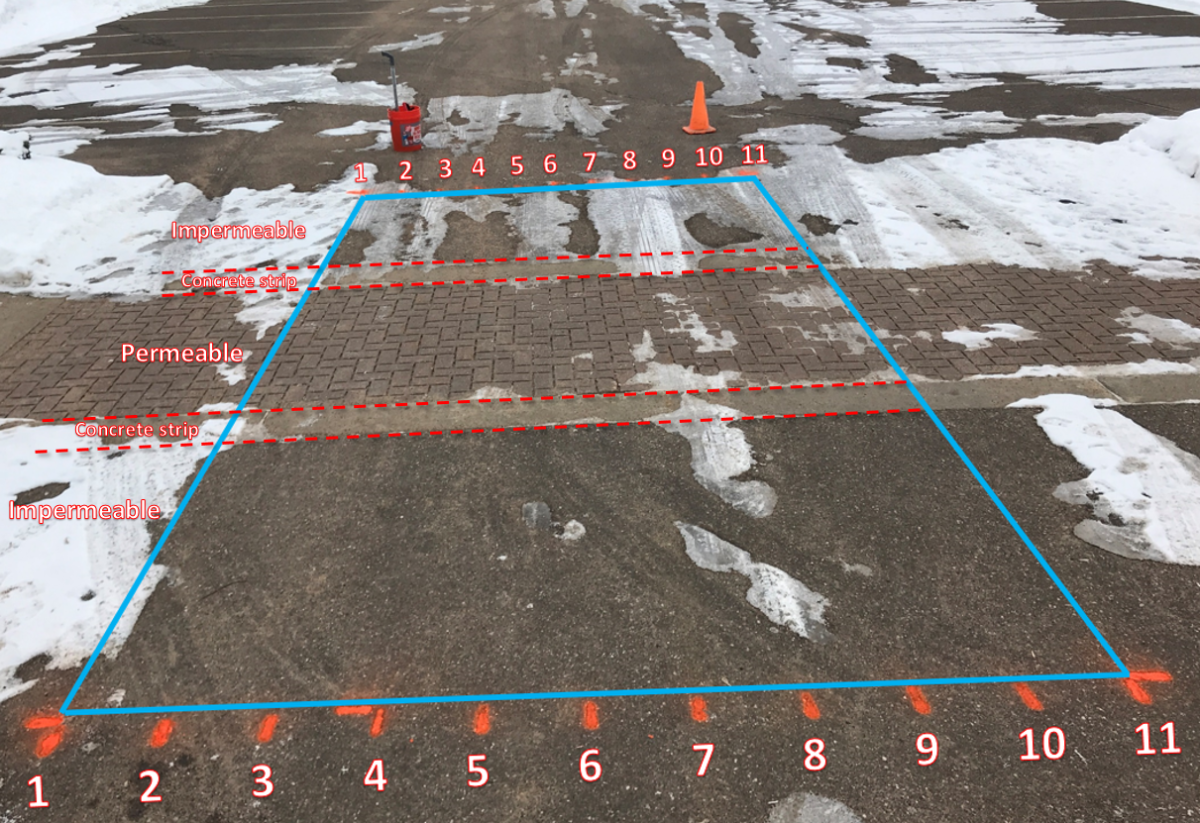Evaluating permeable pavement as an alternative to road salt application

Project Summary
In cold climates like Minnesota, road salt is used as a deicing agent to improve transportation safety during winter months. However, road salt can have negative impacts on the surrounding environment; throughout the Twin Cities, excess chloride from road salt has caused lake and stream impairments. To protect Minnesota water bodies, road salt use must be decreased, and thus other deicing methods must be evaluated.
The Minnesota Department of Transportation tasked SAFL researchers with evaluating the use of unsalted permeable pavement in comparison to traditional impermeable salted pavement. Permeable pavement refers to a surface where water can infiltrate into pavement and ultimately become groundwater, rather than running off pavement into the stormwater system.
Methods
Research data and literature were reviewed prior to starting experiments. For the field experiments, data were collected at the MNRoad Research Facility and sites within the cities of Blaine, Edina, Falcon Heights, Inver Grove Heights, Little Canada, Mahtomedi, Maplewood, Minneapolis, North St. Paul, Robbinsdale, Roseville, Shoreview, Stillwater, and Woodbury.
Various measurement techniques were applied throughout this experiment. Photographs were taken at field sites and used to identify the presence of snow. Air temperature, surface temperature, and in-pavement temperature were measured at several sites in order to predict pavement surface conditions. Lastly, surface friction was measured using a portable friction tester to test whether the pavement was slippery, and thus unsafe for travel.

Outcomes
The results of this study showed that more salted impermeable pavement sites had higher friction and lower snow or ice cover than unsalted permeable pavement sites. Permeable pavement sites, however, had less standing water than impermeable pavement sites. Overall, it was determined that the main benefit of permeable pavement in the winter is the infiltration of meltwater, to prevent refreezing.
Future Work
Future work could include researching what conditions and sites are ideal for permeable pavement, and ultimately creating guidance for practitioners designing and installing permeable pavement. Future research could also be conducted regarding heated pavements for the reduction of road salt, and whether permeable pavements could be heated to melt and infiltrate water efficiently.
